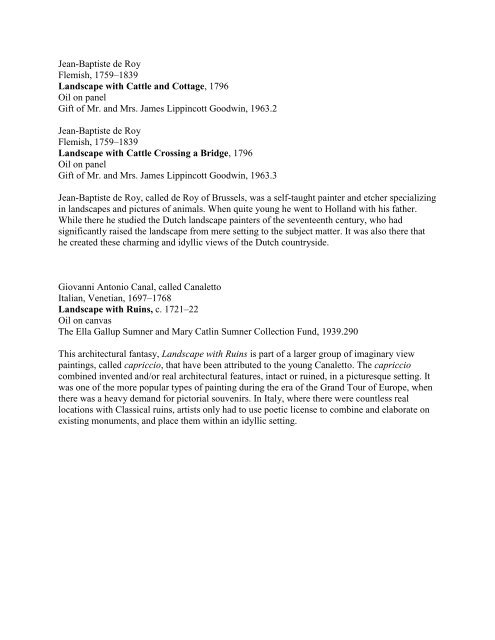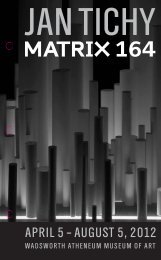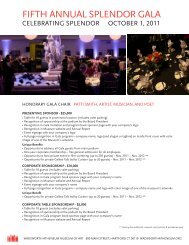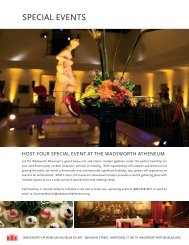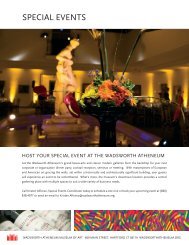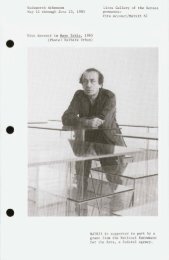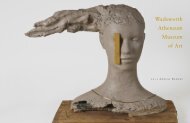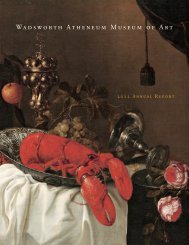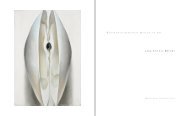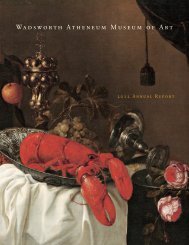The Age of Pleasure and Enlightenment European art of the ...
The Age of Pleasure and Enlightenment European art of the ...
The Age of Pleasure and Enlightenment European art of the ...
You also want an ePaper? Increase the reach of your titles
YUMPU automatically turns print PDFs into web optimized ePapers that Google loves.
Jean-Baptiste de RoyFlemish, 1759–1839L<strong>and</strong>scape with Cattle <strong>and</strong> Cottage, 1796Oil on panelGift <strong>of</strong> Mr. <strong>and</strong> Mrs. James Lippincott Goodwin, 1963.2Jean-Baptiste de RoyFlemish, 1759–1839L<strong>and</strong>scape with Cattle Crossing a Bridge, 1796Oil on panelGift <strong>of</strong> Mr. <strong>and</strong> Mrs. James Lippincott Goodwin, 1963.3Jean-Baptiste de Roy, called de Roy <strong>of</strong> Brussels, was a self-taught painter <strong>and</strong> etcher specializingin l<strong>and</strong>scapes <strong>and</strong> pictures <strong>of</strong> animals. When quite young he went to Holl<strong>and</strong> with his fa<strong>the</strong>r.While <strong>the</strong>re he studied <strong>the</strong> Dutch l<strong>and</strong>scape painters <strong>of</strong> <strong>the</strong> seventeenth century, who hadsignificantly raised <strong>the</strong> l<strong>and</strong>scape from mere setting to <strong>the</strong> subject matter. It was also <strong>the</strong>re tha<strong>the</strong> created <strong>the</strong>se charming <strong>and</strong> idyllic views <strong>of</strong> <strong>the</strong> Dutch countryside.Giovanni Antonio Canal, called CanalettoItalian, Venetian, 1697–1768L<strong>and</strong>scape with Ruins, c. 1721–22Oil on canvas<strong>The</strong> Ella Gallup Sumner <strong>and</strong> Mary Catlin Sumner Collection Fund, 1939.290This architectural fantasy, L<strong>and</strong>scape with Ruins is p<strong>art</strong> <strong>of</strong> a larger group <strong>of</strong> imaginary viewpaintings, called capriccio, that have been attributed to <strong>the</strong> young Canaletto. <strong>The</strong> capricciocombined invented <strong>and</strong>/or real architectural features, intact or ruined, in a picturesque setting. Itwas one <strong>of</strong> <strong>the</strong> more popular types <strong>of</strong> painting during <strong>the</strong> era <strong>of</strong> <strong>the</strong> Gr<strong>and</strong> Tour <strong>of</strong> Europe, when<strong>the</strong>re was a heavy dem<strong>and</strong> for pictorial souvenirs. In Italy, where <strong>the</strong>re were countless reallocations with Classical ruins, <strong>art</strong>ists only had to use poetic license to combine <strong>and</strong> elaborate onexisting monuments, <strong>and</strong> place <strong>the</strong>m within an idyllic setting.


